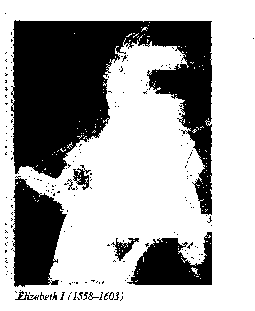
36
Elizabeth I, Queen of England and Ireland, daughter of Henry VIII and Anne Boleyn, succeeded her half-
sister to the great delight of the people.
Princess Elizabeth after her mother's execution was declared illegitimate, she spent her childhood in
loneliness, and only sometimes enjoyed the company of her brother Edward, encouraged by her step mother
Catherine Parr.
Elizabeth was a well educated, remarkable woman, who had endured the hardships other youth and
succeeded to a dangerous heritage. The country was surrounded by powerful enemies: Spain possessed the
Netherlands and France controlled Scotland, where the French mother of the 16 year old Mary Queen of Scots
was Regent. To all the true Catholics Elizabeth still remained illegitimate, but Mary Stuart, the great grand-
daughter of Henry VII Tudor by his daughter Margaret was supported in her claim to the English throne as the
rightful Queen of England.
Yet Elizabeth was equal to the situation. She had the Tudor courage and combined an almost masculine
intelligence with an altogether feminine intuition, which enabled her to understand her people and select the
right advisers.
Her first steps were to restore the moderate Protestantism other father: the Anglican service was reintroduced,
and 39 articles, formulating the established doctrine of the Church, the Symbol of the Faith.
Specific differences in the development of the Reformation in England and Scotland didn't prevent the
Scottish Presbyterians and the Church of England from cooperation in the conflict and struggle against the
Catholics, both in England and Scotland.
The Scottish merchants supported their own variant of Calvinism, the Presbyterianism – a cheaper church
founded on democratic principles of elected preachers and community chiefs. They denied the right of one man
(the Pope, the King, or the bishops) to the Supremacy in Church.
The Presbyterian Church helped
to
secure the Independence of Scotland
in
their struggle against catholic
France.
The policy of Elizabeth was one of compromise and settlement. In foreign affairs she continued the work of
Henry VII encouraging the expansion of the English merchants. Spain was the greatest trade rival and enemy as
it dominated both Europe and the New World. The Spanish Catholic kings
plotted against Elizabeth in their
desire to substitute Mary for Elizabeth as Queen and resented the first English efforts in the exploration of the
New World.
Elizabeth was a competent diplomat and maintained the balance of power in Europe.
But she helped Dutch Protestants who rebelled against Philip II of Spain and allowed them to use English
harbours. English ships were attacking Spanish ships as those were returning from America. The English
captains – the sea dogs" tried to appear private adventures – John Hawkins, Francis Drake and Martin
Frobisher, but they shared their plunder with their beloved Queen.
Philip was outraged and began to build up his naval forces to conquer England.
In 1587 Francis Drake attacked the fleet in the Spanish harbours of Cadiz and destroyed a great number of
ships. And that was the last straw in this undeclared war.

